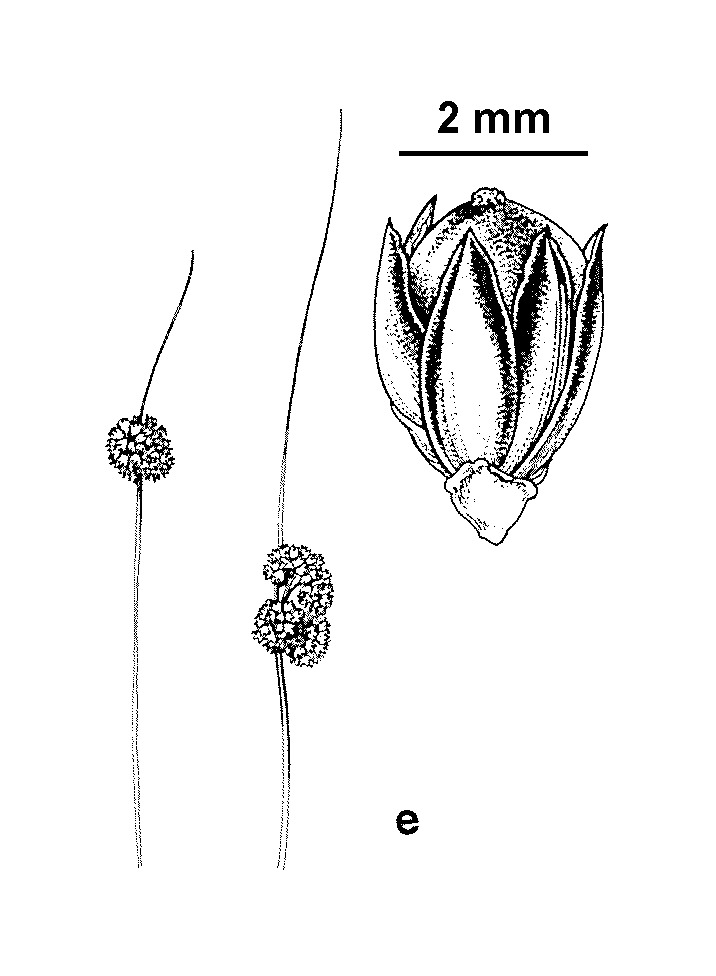Juncus filicaulis
Buchenau Thread RushDensely tufted perennial with horizontal or ascending rhizomes. Cataphylls tight, pale to medium brown or pale pinkish-brown towards the base, to c. 7 cm long. Culms erect, slender and wiry, dull green to grey- or bluish-green, 15–45 cm high and 0.5–1.0(–1.2) mm diam.; striations 15–20, strongly raised and easily counted; pith cobwebby and continuous throughout or interrupted with very small air spaces; stomates superficial. Inflorescence with flowers congested into one or few globular clusters, the branches often obscured by the clusters; primary bract continuous with culm, to c. 10 cm long; prophylls present. Tepals ± strongly reddish tinged on the margins and midrib, 1.8–2.8 mm long; stamens 3, rarely 6, anthers 0.4–0.8 mm long. Capsules apically flattened, typically with a reddish-brown apex, shorter than, equal to, or longer than the tepals, 2.0–2.6 mm long. Flowers mostly Nov.–Jan., seeds shed mostly Dec.–Mar.
Wim, VVP, VRiv, MuF, GipP, OtP, Gold, CVU, DunT, NIS, EGL, EGU, HSF, HNF, Strz, MonT, VAlp. Also NSW, ACT, Tas. New Zealand. Primarily of grassy montane sites, but with several widely dispersed lowland occurrences. Infrequently collected, but perhaps overlooked due to confusion with reduced forms of the similar Juncus subsecundus.
Juncus filicaulis is characterized by the following combination of characters: wiry culms c. 1 mm or less diam. with no more than 20 striations and continuous or minutely interrupted cobwebby pith; inflorescence consisting of 1–3 globular clusters of flowers; tepals acute (but not acuminate) less than 3 mm long and strongly tinged red. Forms of J. subsecundus, J. amabilis and J. australis with fine culms and reduced inflorescences resemble J. filicaulis, but do not combine the above characteristics. Hybrids with J. subsecundus are known.
Albrecht, D.E. (1994). Juncus. In: Walsh, N.G.; Entwisle, T.J., Flora of Victoria Vol. 2, Ferns and Allied Plants, Conifers and Monocotyledons, pp. 197–233. Inkata Press, Melbourne.
 Spinning
Spinning

